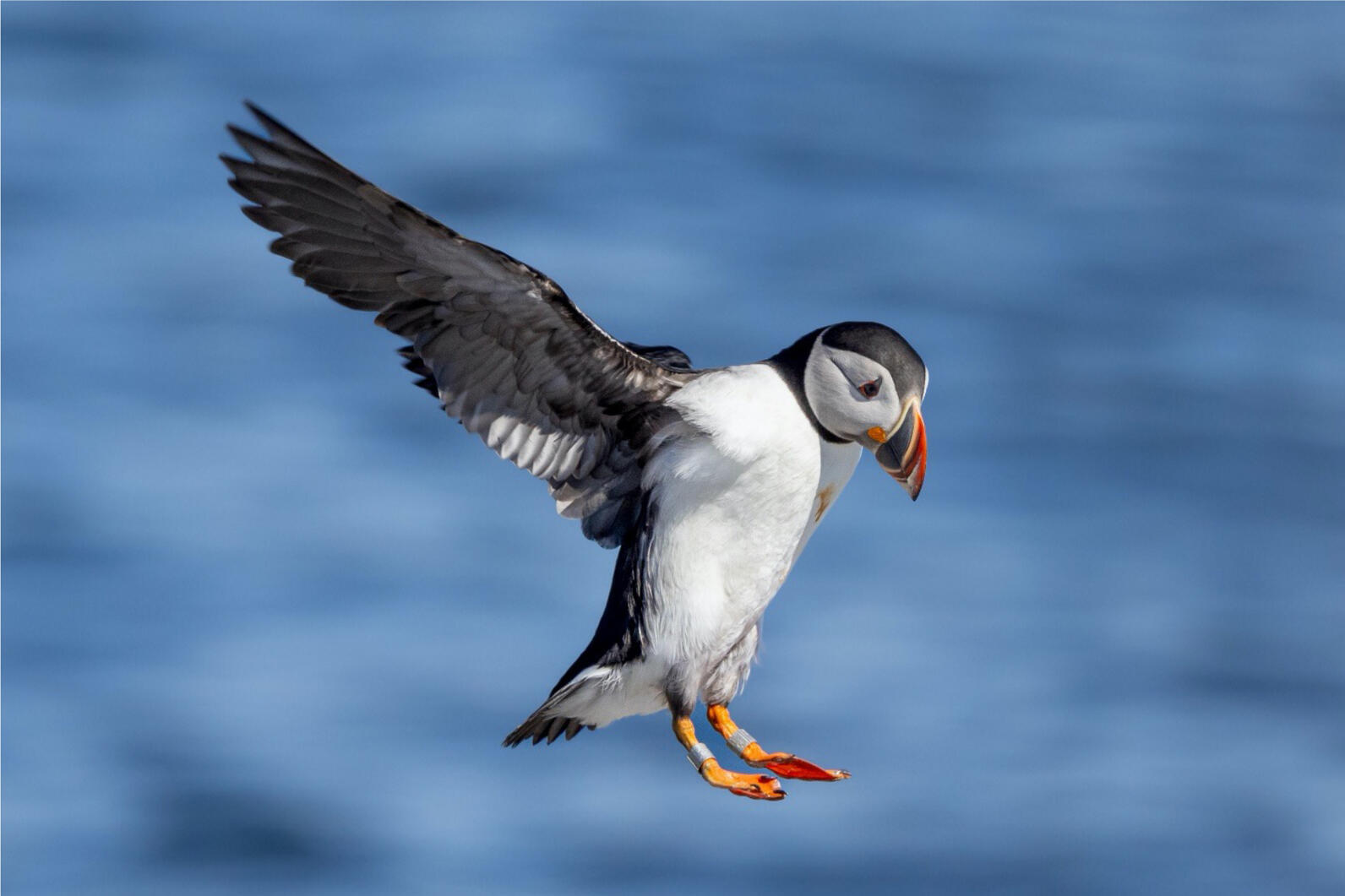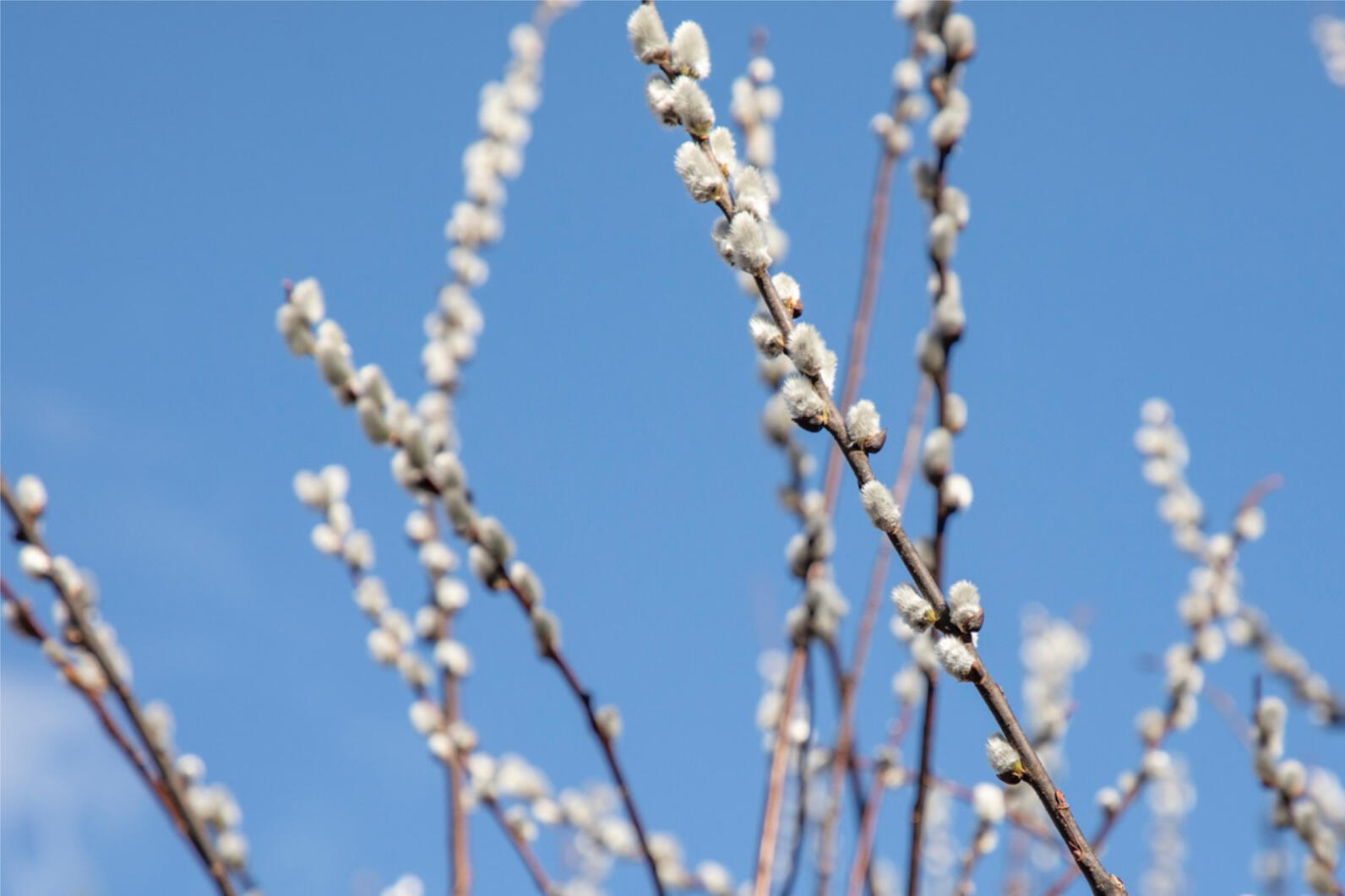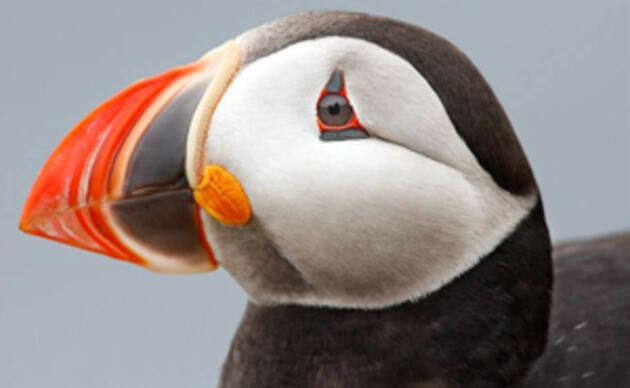
In a few short weeks, the sky over the Gulf of Maine will come alive thanks to the return of puffins, terns, and other seabirds that nest along the Maine’s coastline. It is too soon to know the conditions seabirds will face this season. The changing environment and potential impacts of avian influenza are top of mind.
Just like these seabirds, seasonal staff are also preparing for their migration back to the northeast. In fact, some have already arrived! This season, 58 instructors, 23 biologists, five outreach assistants, three post-graduate students and two Herz International Fellows will flock to Maine this summer. These young biologists and educators will steward seabird islands, support the education initiatives of Hog Island Audubon Camp and the Project Puffin Visitor Center, and engage with thousands of Maine residents and visitors on puffin cruises.

Gannets Galore
The avian influenza outbreak of 2022 decimated Northern Gannet colonies in Atlantic Canada. Gannets nest very close together, in a somewhat geometric pattern, with nests just a beaks length apart from each other. These high-density nesting environments make the species especially prone to highly pathogenic avian influenza. Because gannets are long-lived seabirds that only lay one egg each nesting season, high mortality events, like avian flu and oil spills, have long lasting impacts on their population.
A project to restore this species, along with Common Murres, to nesting sites in Atlantic Canada is taking flight with some help from Audubon’s flock. In the fall, Mad River Decoy by Audubon received its biggest order to date! Led by “Seabird Sue”, volunteers and seasonal staff worked throughout the winter to fulfill an order of 420 Northern Gannet and 120 Common Murre decoys. These social attraction tools will be deployed to nine different sites across Newfoundland, Quebec, and the Bay of Fundy. Later this spring, Sue will travel to some of the locations to share expertise on how to deploy social attraction systems, which include audio systems, for maximum impact.

Eighty-nine Seasons and Counting
Fool’s Spring has been teasing those who reside along Maine’s coast. While late season snow may have temporarily dampened the spirits of those yearning for summer, it hasn’t stopped seasonal preparations at the Todd Wildlife Sanctuary. The Boat House and Queen Mary docks were installed in early March and upgrades to the island’s electrical and water systems are underway. Final touches are also in the works for the “Quarter Deck” which provides housing to island staff.
Island preparations aren’t the only thing needed for a successful season. We’ve worked hard to grow the Hog Island community. Due to popular demand, the Junior Instructor Program expanded this season. We received many impressive applications from early career naturalists from across the country. The competitive candidate pool yielded this year’s nine Junior Instructors, two more than previous years. Additionally, the Artist in Residence program has expanded, and the island will host a fourth artist this summer.
Your support makes our work possible!
Our work protecting seabirds, inspiring the next generation of conservationists, and sharing a love of birds with thousands each year is only possible thanks to the generosity of people like you. Please consider making a gift or adopting a puffin to ensure this work continues for decades to come.





